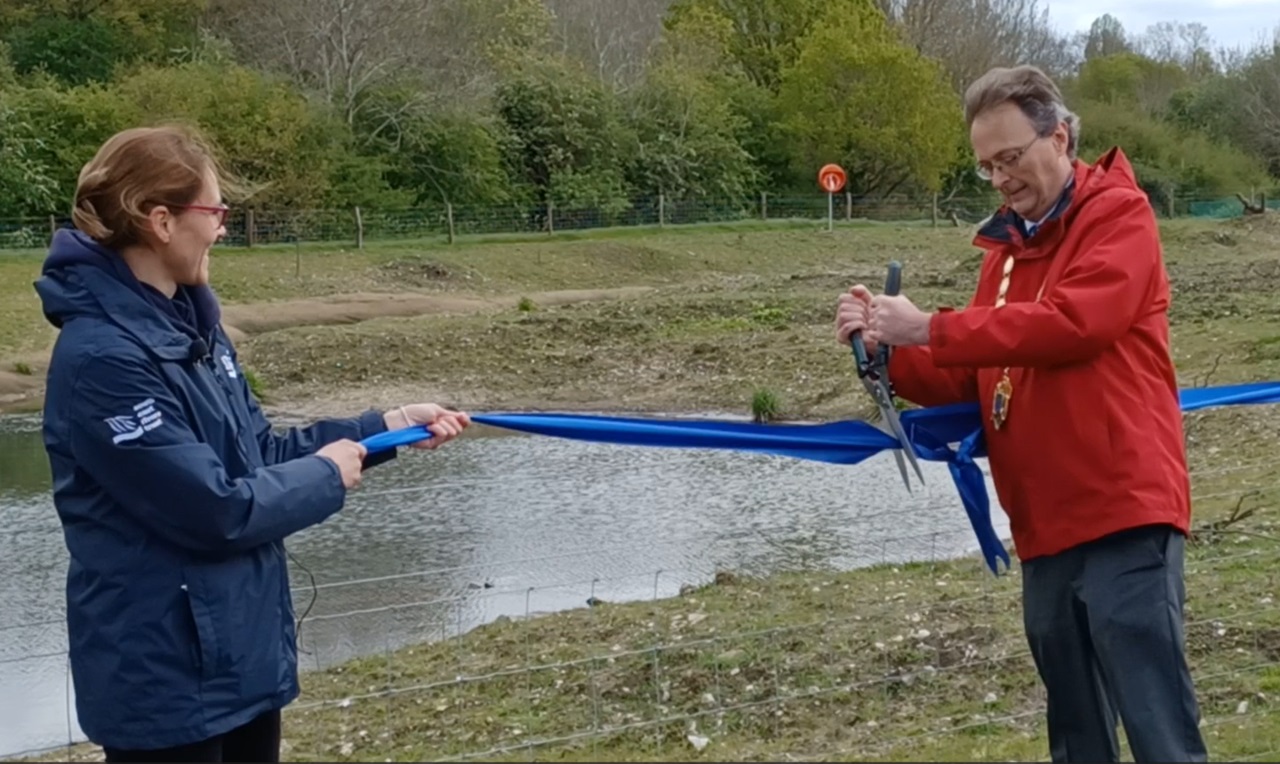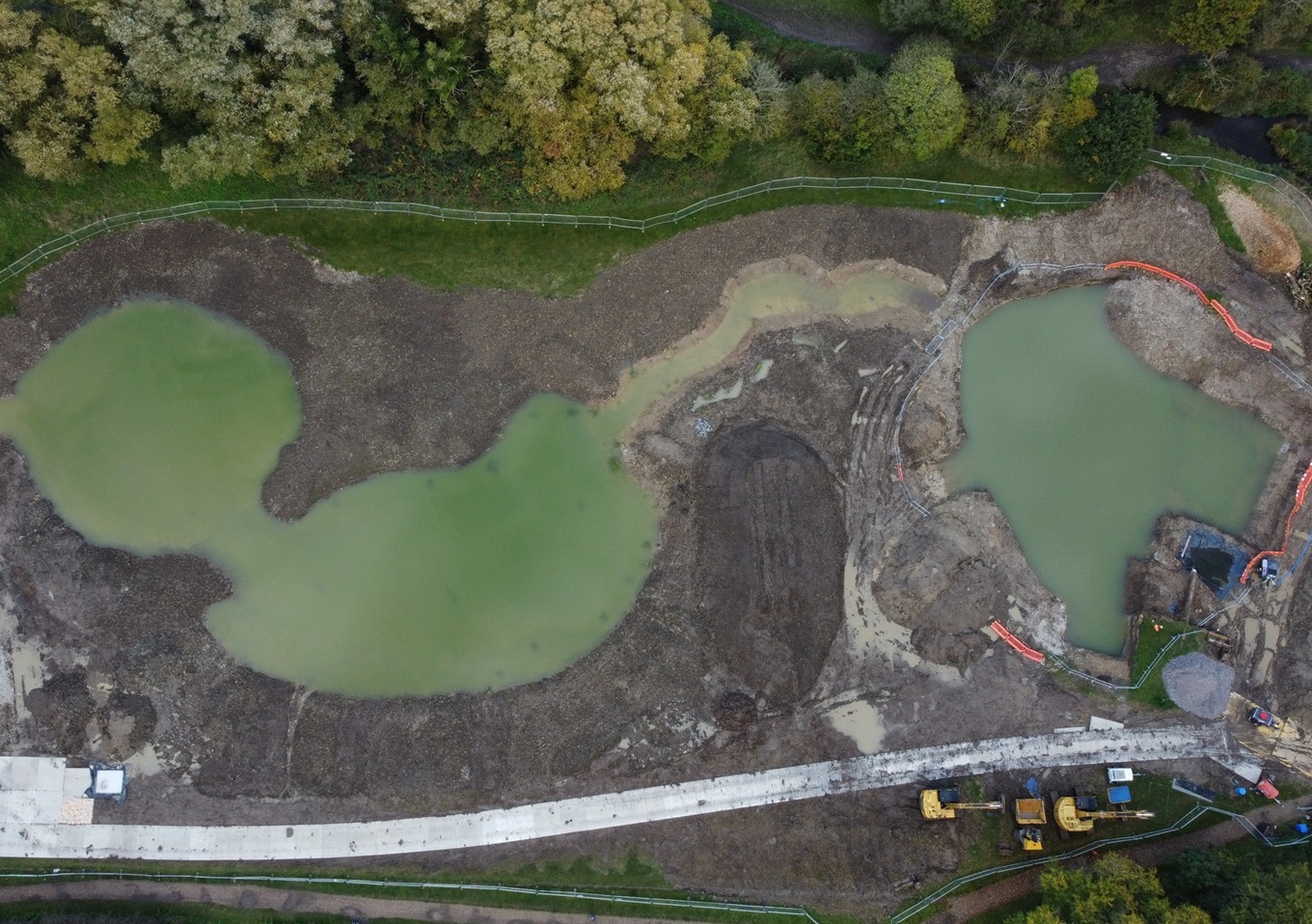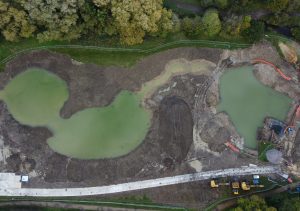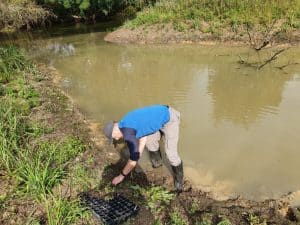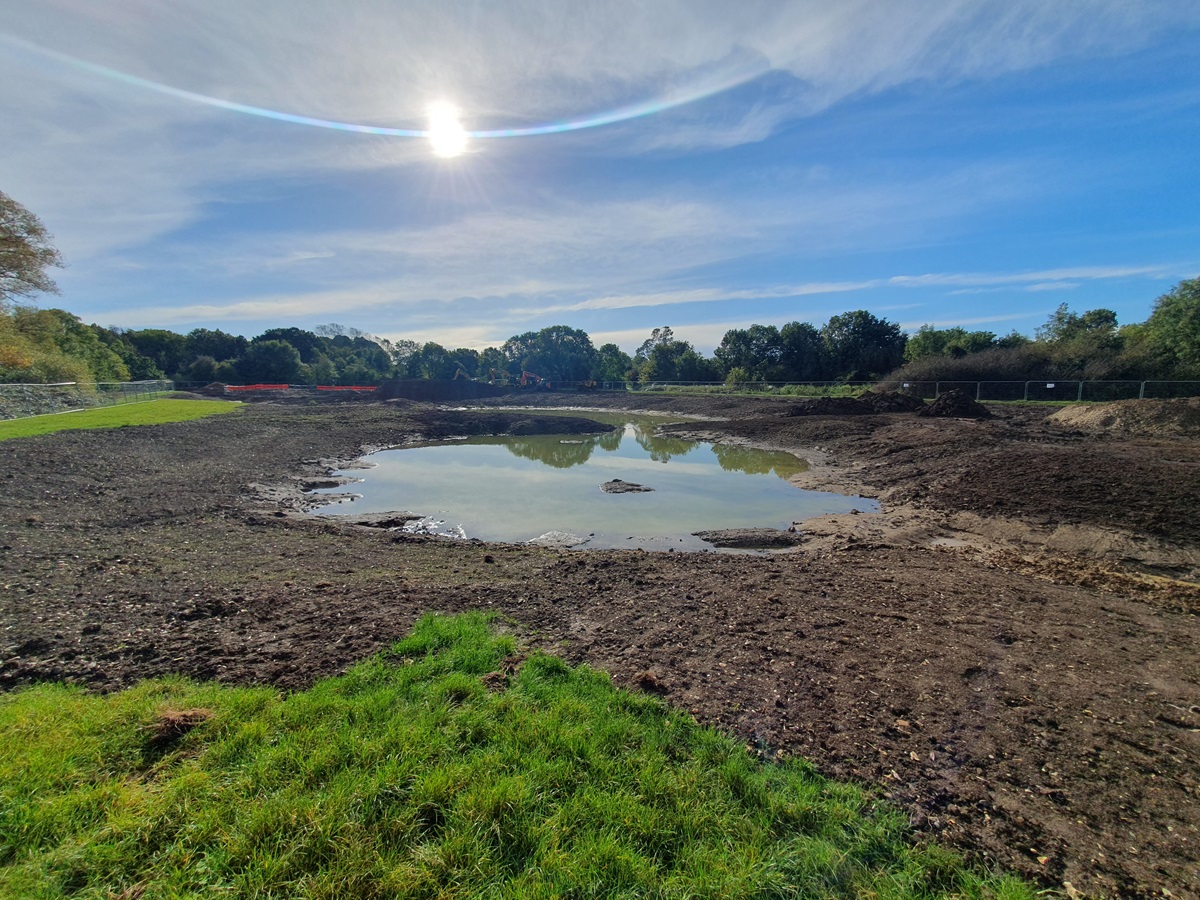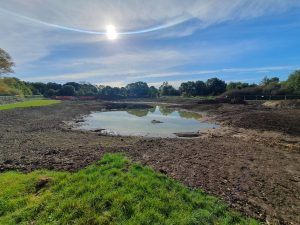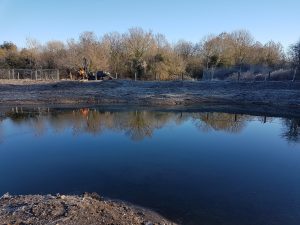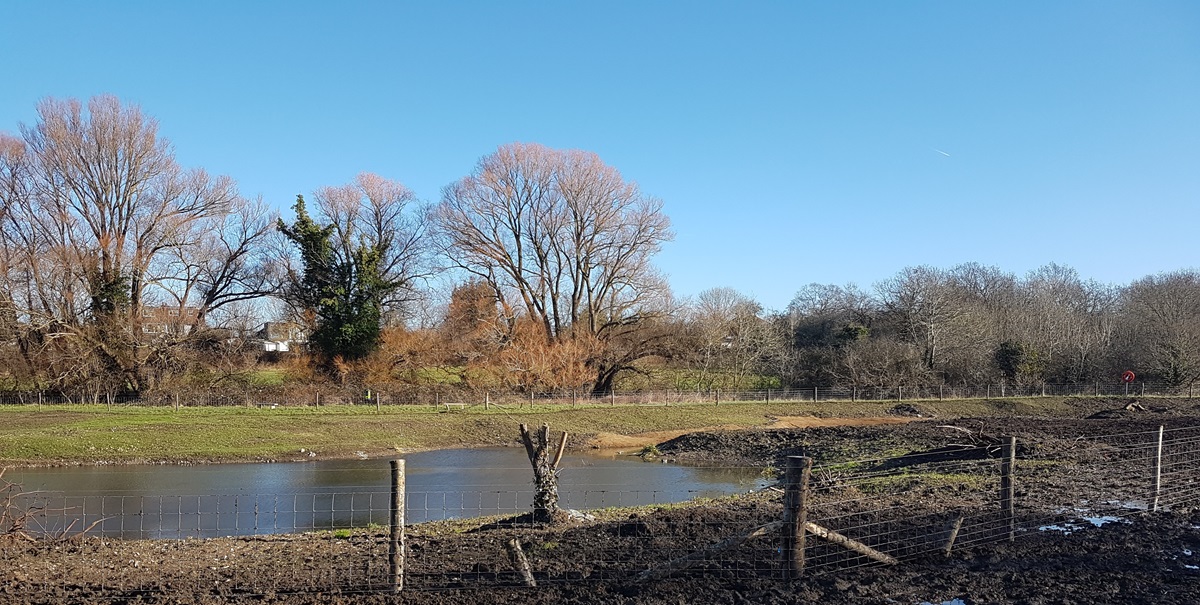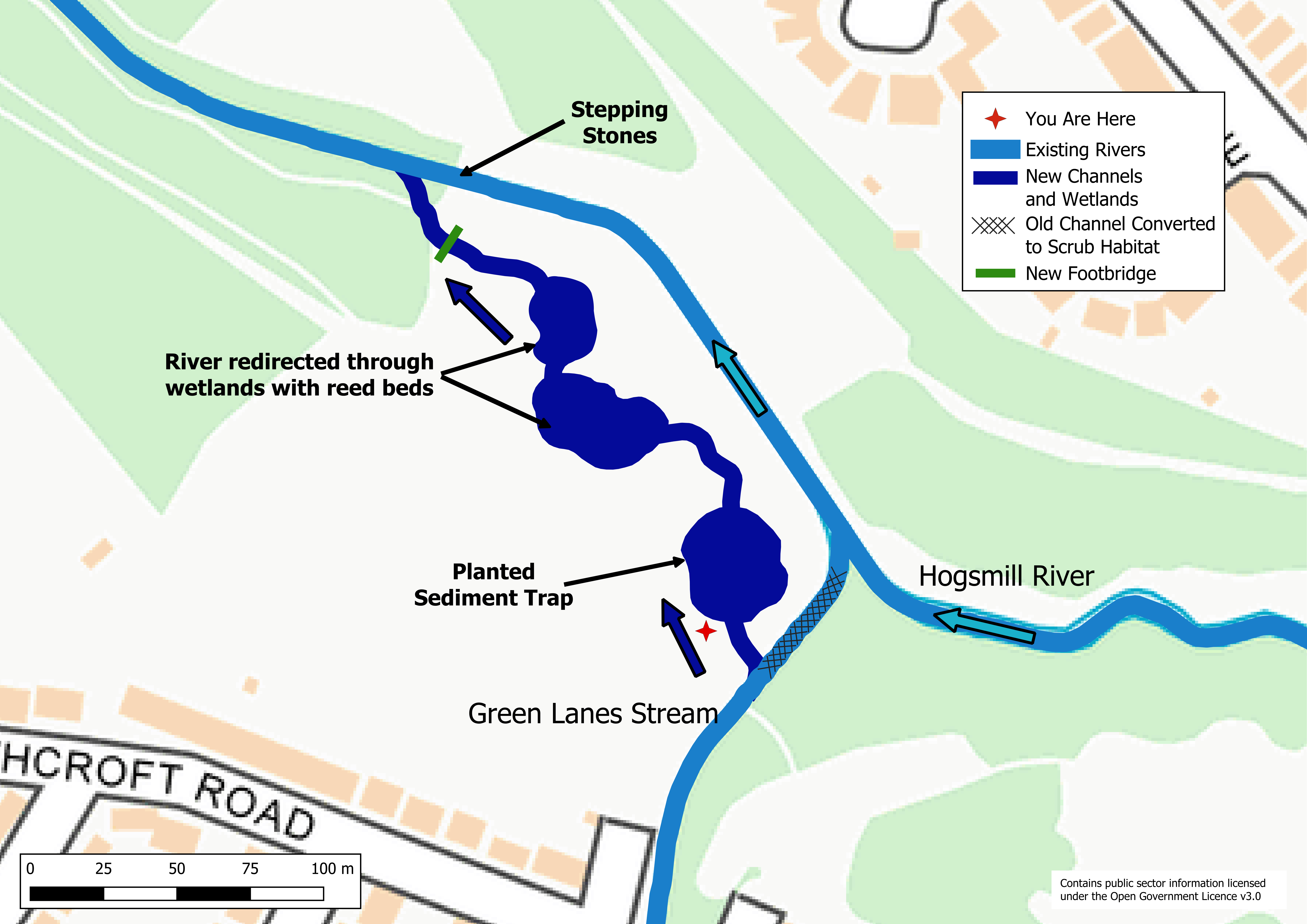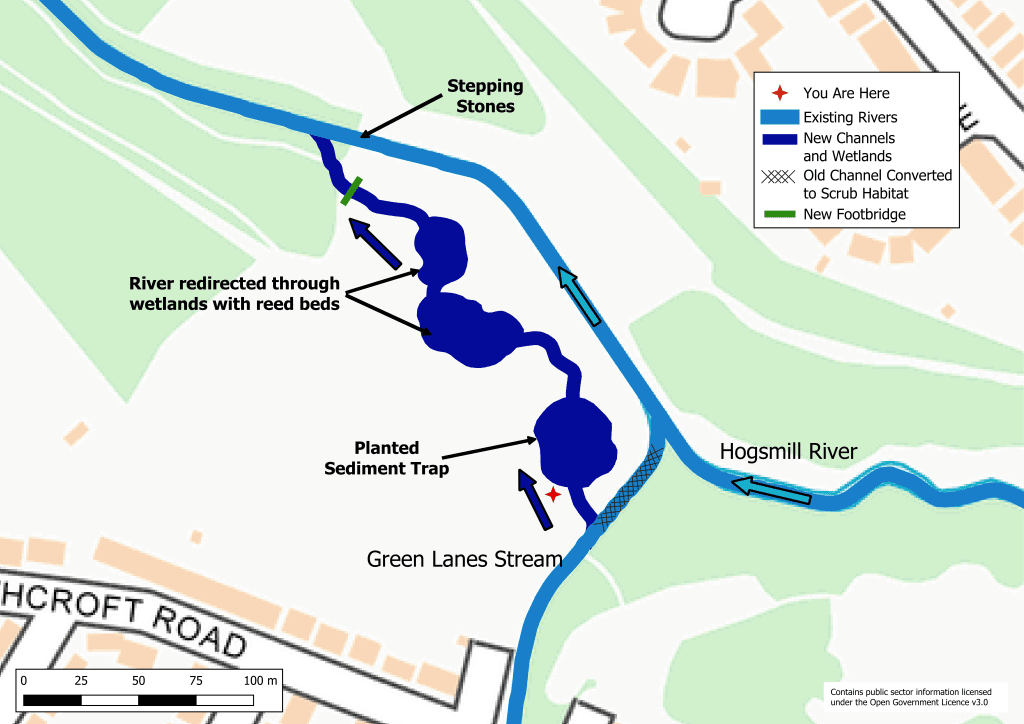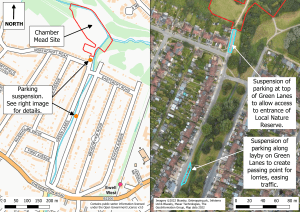Hundreds of people attended Saturday’s Chamber Mead wetlands open day, many of them volunteering to start the mammoth task of adding 10,000 plants to the edges of this important pollution filter for the River Hogsmill.
The 2000m2 series of wetlands has been created to divert pollutants, coming from the Green Lanes stream, away from the globally rare chalk stream and will increase the numbers and types of wildlife across the Hogsmill Local Nature Reserve.
Egrets and ducks were already enjoying the wetlands as crowds gathered to hear Dr Bella Davies, Co-CEO of the South East Rivers Trust (SERT), explain the reasons for creating the wetlands in partnership with Epsom & Ewell Borough Council, which owns and manages the nature reserve.
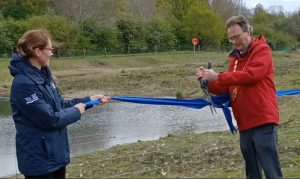
The wetlands were then officially opened thanks to a ribbon being cut by The Worshipful Mayor of Epsom & Ewell, Councillor Rob Geleit.
In her speech, Bella explained that the project had been conceived more than a decade ago by the Hogsmill Catchment Partnership. This group of organisations and individuals wanted to address the issues of poor water quality in the Hogsmill. It is one of only about 220 chalk streams worldwide. Clear, cool waters in such streams should provide special conditions for creatures such as trout, eel and water voles to thrive.
“Many years ago we identified the Green Lanes stream was bringing poor water quality in. We discovered there was a whole load of urban runoff coming from Epsom,” Bella said.
“Surface water drains were sending [polluted] water straight from roads into the river – and that included lots of nasty things like hydrocarbons, heavy metals from tyres and catalytic converters and microplastics. In addition, there are misconnected pipes for example where toilets are plumbed in wrongly. People pour items down drains, there are pesticides from gardens – and all that is really toxic.
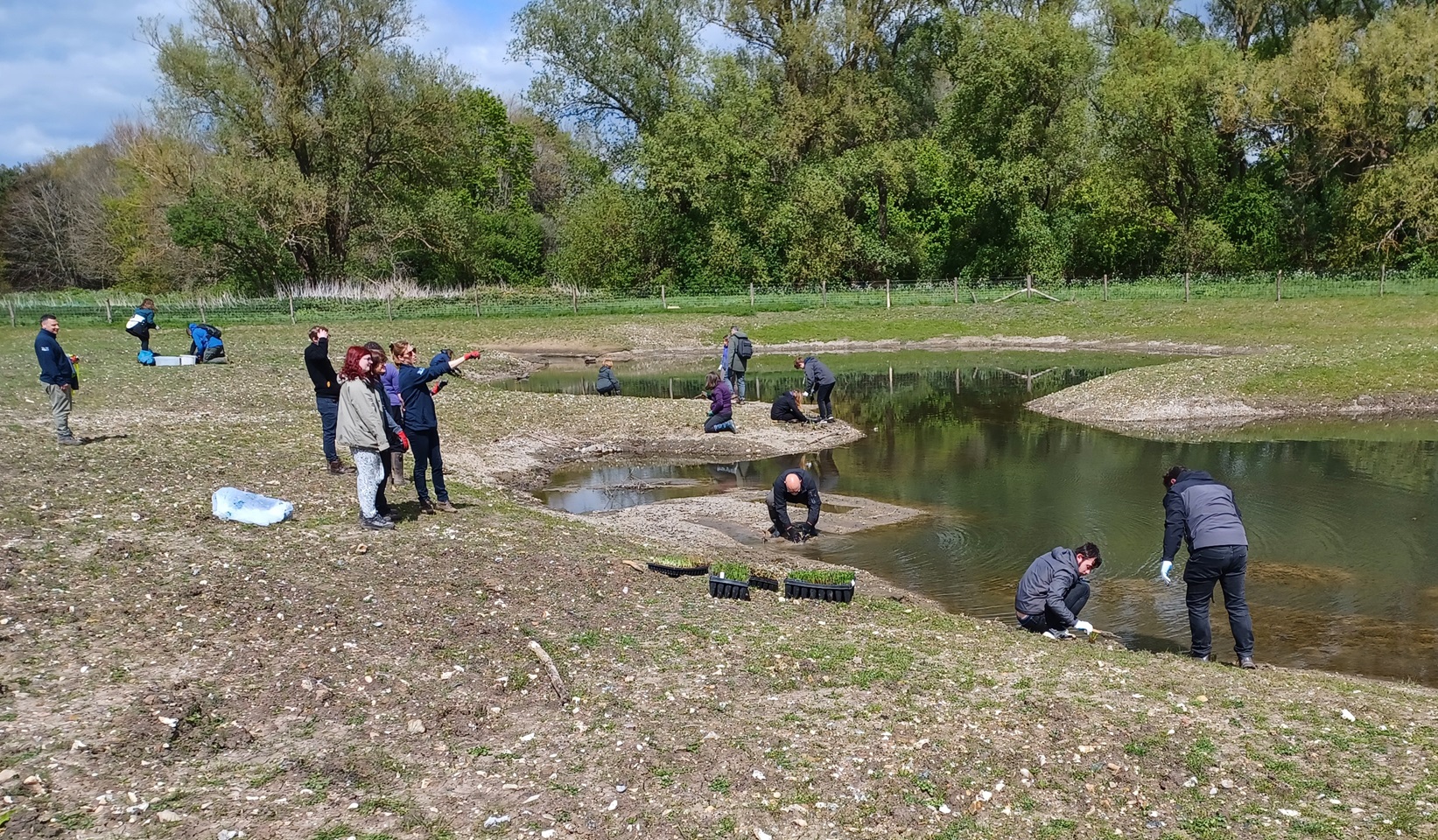
“There is another really big impact which came from the sewer storm tank overflows. Further up the Green Lanes stream there are two sewers that come together … and to stop them from backing up into your homes, there is a storm tank system where water flows up and theoretically goes back into the sewer. But in exceptional circumstances it overspills into the Green Lanes stream.
“Trying to fix that is really difficult,” Bella continued. “We worked with Thames Water to make the performance of the storm tanks as best as they could and they have reduced the number of times they spill massively.
“Another option is to clean the water before it goes into the river – and that’s what the wetlands are here to do.”
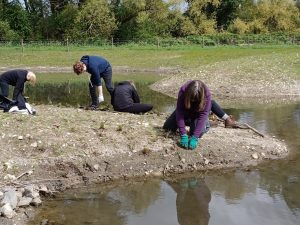
About 90% of wetlands have been lost in the past 100 years, Bella added, and this nature-based solution would bring lots of other benefits. “It might look a bit raw, but it is a great time to see it [before plants are added].”
Trapping the silt in the initial pond was “really important,” she explained, because otherwise that silt smothers the river gravels in the water, restricting wildlife’s ability to thrive.
Contaminants coming from Green Lanes are also cleaned through the plants, before the cleaned water is sent back into the Hogsmill downstream of the popular stepping stones.
Multiple benefits of the wetlands include it becoming an attraction for wildlife such as damselflies and dragonflies, Bella added. It is also “really important” for local climate regulation. Those living near water experience lower temperatures which will be “really important” in hot summers in particular.
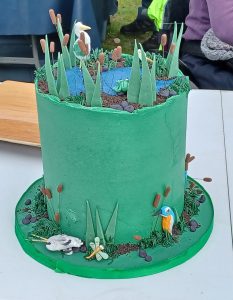
“There is also increasing evidence of the importance of nature for health and well being – and that’s amplified when we are near water. It helps decrease stress and also is a really great educational resource,” she added, referencing a new nature trail that has been put up around the site.
Delivering multiple benefits meant SERT, which leads the catchment partnership, has been able to appeal to a wide range of different funders. The development of the wetlands has received funding from The Coca-Cola Foundation, Natural England (through the Species Recovery Programme), the Environment Agency, Surrey County Council, the Rivers Trust, the Zoological Society of London, Garfield Weston Foundation and Thames Water, with in-kind support from the landowner Epsom & Ewell Borough Council. The new wetlands are part of the wider Replenish programme in partnership with the Coca-Cola Foundation and the Rivers Trust. The aim of Replenish is to restore millions of litres of water in this and other local catchments, in turn improving biodiversity.
In total, about 300 visitors through the day had the chance to start the task of putting in vegetation around the wetlands and go on guided walks to hear more about the project.
Family friendly activities such as craft and the chance to explore what lives in the water through riverfly demonstrations were also available. Visitors also enjoyed a fabulous cake, baked to look like a wetland flush with wildlife, created by Heidi’s cakes in Carshalton.
Watch Dr Bella Davies speech in full below.

